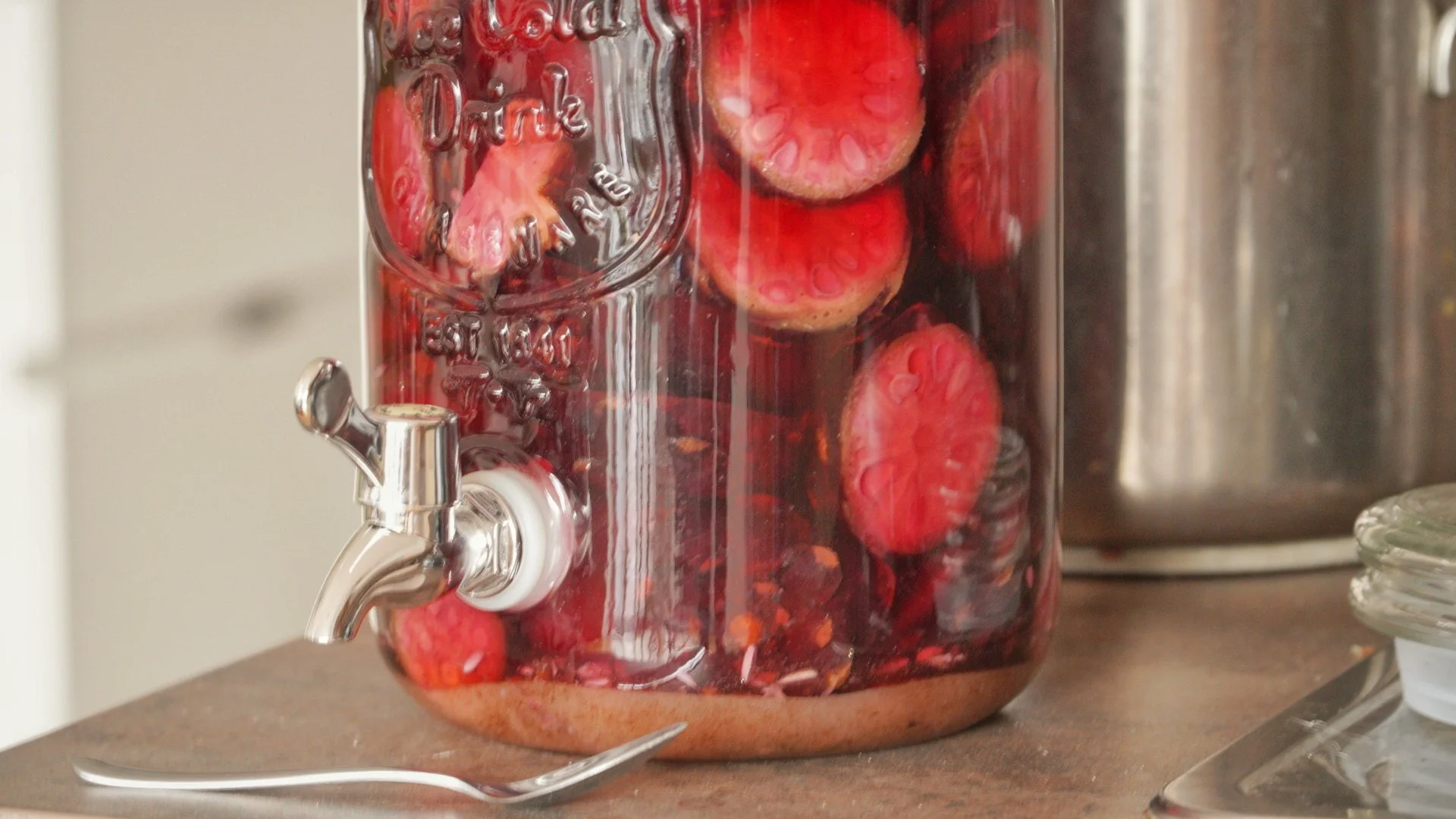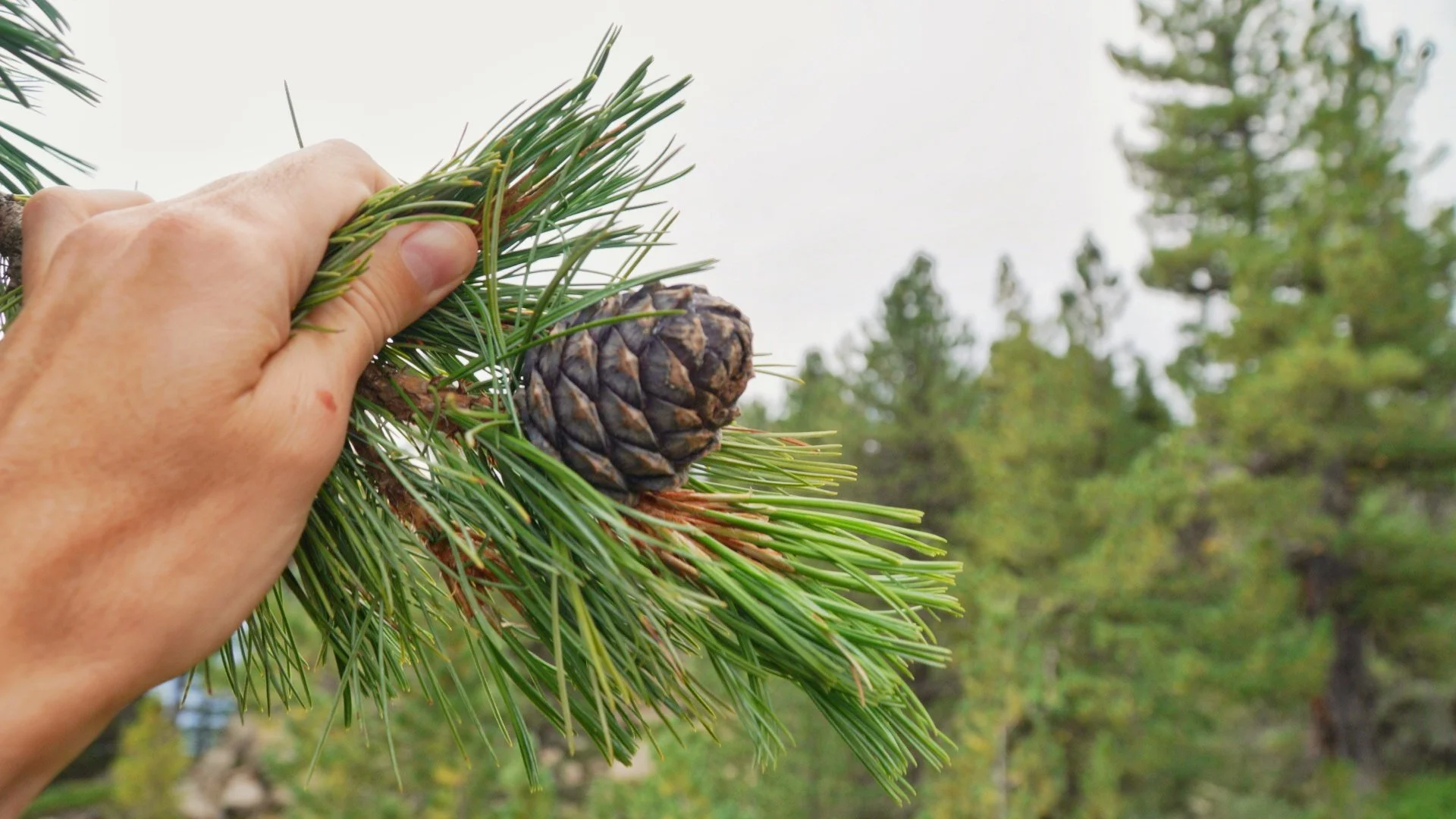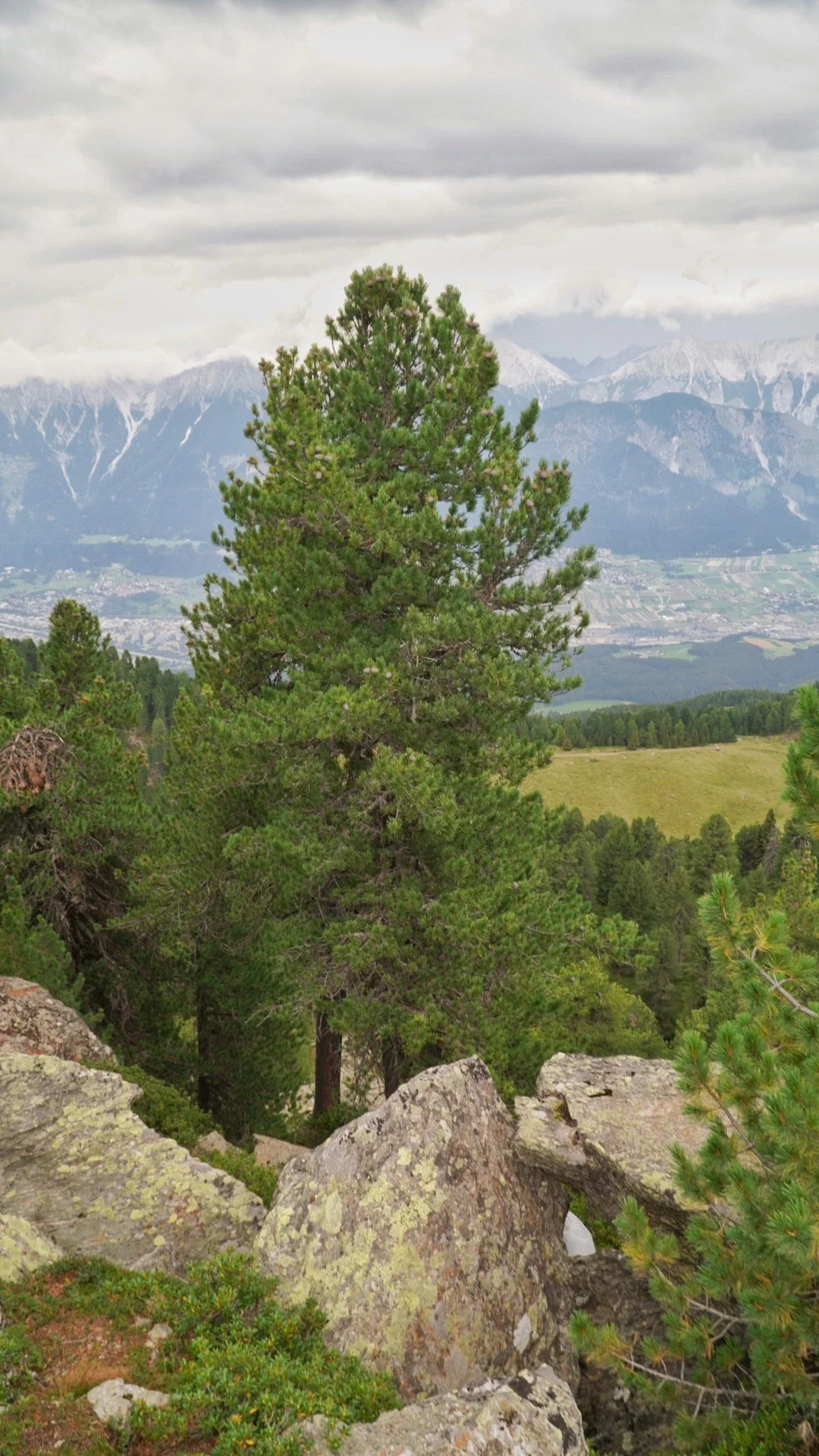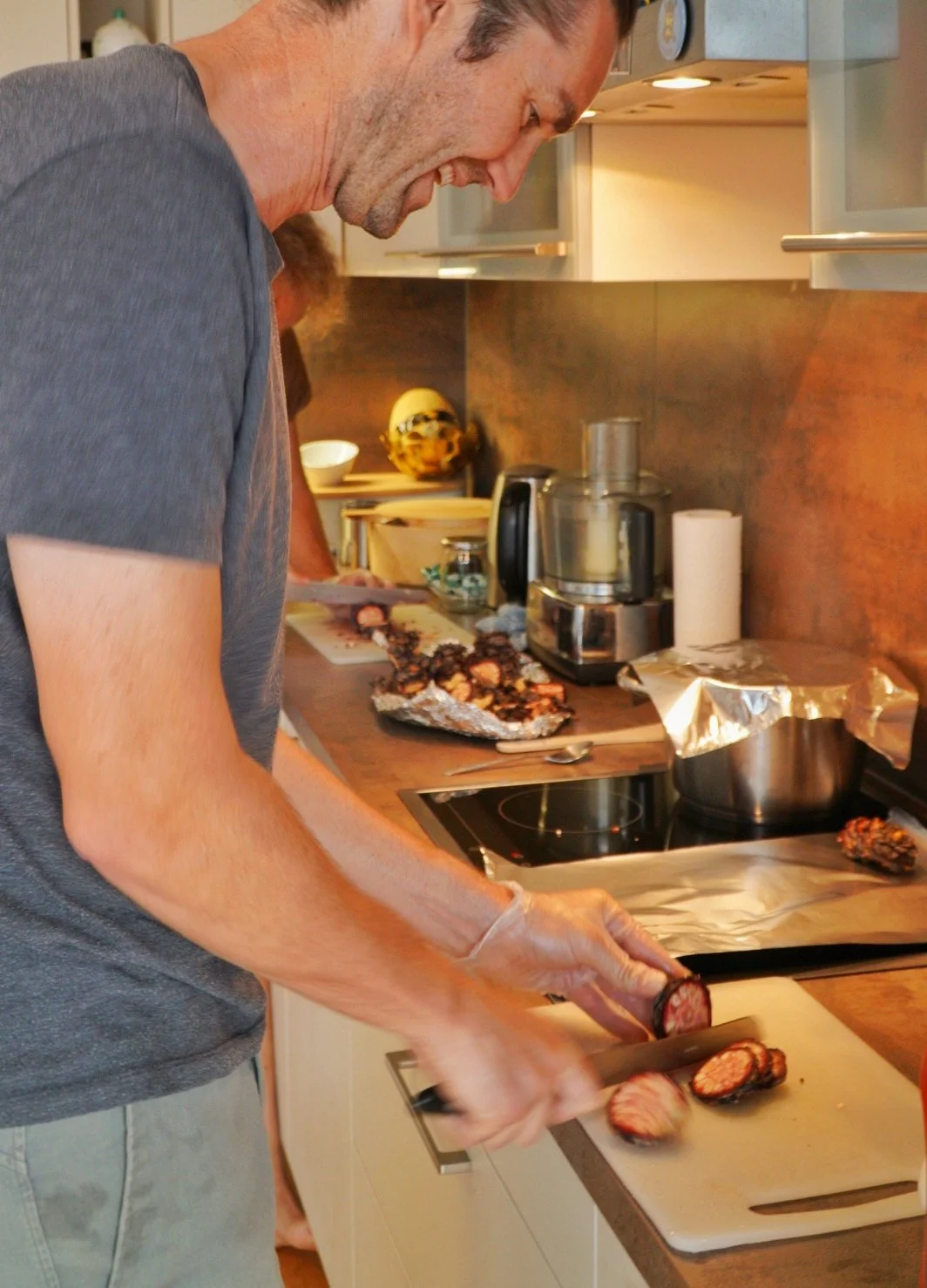Zirbenschnapps
They say “skiers are made in the summer.” turns out, Zirbenschnaps is also made in the summer.
A LUMI favorite amongst guests (and trip leaders), Zirbenschnapps or pine schnaps is as Austrian as it gets. Or even more accurate Tyrolian, since Austria’s second westernmost state and home to LUMI founder Garrott Kuzzy is well known beyond its borders for this beautiful-looking and delicious-tasting liquor. Its main ingredient are Zirbenzapfen, meaning the cones of the Zirbentree, which is a specific type of pine tree that preferably grows in altitudes of 4500 to 6000ft in the central alps. One area with lots of specimens of this rather rare tree is located just south of Innsbruck: On the slopes of the Patscherkofel – world-famous for hosting the ’76 men’s Olympic downhill race – lies the so-called Zirbenweg-path, home to one of Europe’s largest and oldest Zirbentree-forests. For one week in late July or early August, the pinecones drip with sticky sap. Now is the perfect time of year to harvest them and make schnapps for the coming winter. Just a couple days ago, this was the setting for our latest LUMI adventure, the quest of making our very own Zirbenschnapps. Lumi trip leader Raphi led me into the mountains to collect Zirben cones to make a batch of highly coveted Zirbenschnapps.
The Austrian Stone Pine, or Zirbe, is a very special tree species. They grow exclusively in high alpine terrain, from about 5,000 to 9,000 feet of elevation. It takes about 50 years for this evergreen tree to produce its first pinecones. Once they are old enough, pinecones only bloom every 8 years or so. Zirbe can grow to almost 100 feet tall and live up to 1,000 years. Because of this, they are a highly protected species. Similar to daily bag limits for fish in the US, it is allowed to collect 3 - 5 Zirbe cones per person, per day. Sounds easy, right? Not quite.
The first step in this process is collecting the pine cones. Timing is key here: The window for getting cones that are just right is slim; a couple days too early and they are still green and too tart, just a couple days later they might be too ripe. In order to even get to the pines, you have to hike up into the mountains. The Zirbenweg Trail is located about 4,000 feet above Innsbruck. Once you have hiked high into the mountains, you then have to find trees that have produced cones.
When we got to the Zirbenweg on a late afternoon at the end of July the pine cones seemed just right. Raphi showed up to our adventure with plastic gloves and a plastic garbage bag. “What’s that for?” I asked. I had assumed the cones would be light and dry, like the pine cones that fall from the trees in autumn. Lesson number one: sap-filled pine cones are heavy and sticky. There’s a reason why pine tar was used as wax on skis for centuries before synthetic kick waxes were invented. Once your backpack, shirt or hands touch one of the sap-filled cones, it’s harder than klister to clean off.
We scaled the trees and pushed ourselves through thickly grown branches, tightly holding on to the sap-drenched bark. Once you find the cones, perhaps the hardest part is actually collecting them, as they are usually close to the top of trees that reach heights of over 100 feet tall. Balancing carefully on the delicately thin branches higher up we made our way to the very top of the trees where the cones grow. Trying to avoid paying too much attention to the light swaying of the tree when leaning out towards the cones, we grabbed them and gently tossed them down, where one of us would be waiting to catch them and stash them in a bag.
Being that high up in a tree on a mountain had another benefit: Up there we could enjoy unobstructed views of Innsbruck in the valley below and the mountain range in the back. Everything was highlighted by a soft orange light, foreboding a storm that was rolling in from the west.
Fortunately, Raphi is a seasoned Zirbenschnapps producer. He knew exactly when and where to go to collect the cones. After just a few minutes, we had collected our daily bag limit, but not before my hands were covered in sap. Having collected enough cones, it was time to head back to the gondola station where we had started our hike and where a nearby hut was promising shelter from the thunder and rain. We gathered our belongings and ran back, just barely making it to the hut before the heart of the storm was upon us. Eierschwammerlgulasch, another Austrian classic dish – featuring chanterelles (picked by the owner of the hut herself) in a creamy, paprika-flavored sauce served with dumplings – and a cold beer were already awaiting us!
The sap in the cones starts to dry quickly, so it is imperative to start your Schnapps production soon. Back home was where the actual production chain began.
We spent the next day slicing the cones with a serrated bread knife and putting the slices, oozing with red sap, into flavorless schnapps. Sugar, flavorless alcohol and big glass jars to store the mixture are the other ingredients besides the pine cones that are needed for the Zirbenschnapps. What kind of sugar, the preferred alcohol, the ratio from sugar to pine cones and alcohol, and the duration of storage very likely vary from person to person and the precise recipe oftentimes is a well kept secret. We are not as secretive: The pine cones are sliced with a bread knife and around 5 of them are put into one liter of Korn (clear wheat Schnapps), adding 90 grams of (white and brown) sugar. The name Schnapps, therefore, is a little misleading: Rather than distilling the alcohol from the cones, they are simply put into the alcohol – somewhat like brewing tea – creating what is called spirit. This mixture will now sit for about 4 weeks, the red sap of the cones giving the liquid a bright red color and its deliciously foresty taste.
How does Zirbenschnapps taste? Imagine closing your eyes as you walk through your favorite pine forest. Now bottle that smell that surrounds you and take a sip. That’s Zirbenschnapps – a favorite winter beverage to warm you from the inside while you’re out on the ski trail.
Not wanting to let any of the pine nuggets go to waste, we also harvested the nuts from the inside of the cone. They look like pine nuts, but rather than having a roasted, salty taste like you find from a store, the small nuts from Zirbe cones are sweet and also taste like the smell of pine trees.
Since we were too impatient to wait that long, we also used some of the cones to make Zirbensyrup. It’s basically the same as making Elderflower Syrup, but uses pinecones instead of Elder flowers. Zirbensyrup tastes like the non-alcoholic version of Zirbenschnapps when mixed with soda water and garnished with lemon slices and mint leaves or rosemary.
Schnapps in Austria is often served after a hearty meal, since it is considered to positively affect one’s digestion. Some even consider Schnapps to have medicinal effects and drink it to stay healthy during the cold season. Did we say LUMI favorite earlier? On our trips, Schnapps doesn’t necessarily mark the end of dinner but might indicate the highest point of a prolonged climb. Not seldom do guests find themselves greeted by a silver plater full of Schnapps shots and sweet treats at the top of a pass, in front of a hut or even during one of the many Worldloppets on our list. If you want to sample our homemade Zirbenschnapps this winter, sign up…
See you on the trail… And in the meantime, Prost!
Garrott






